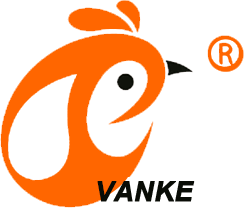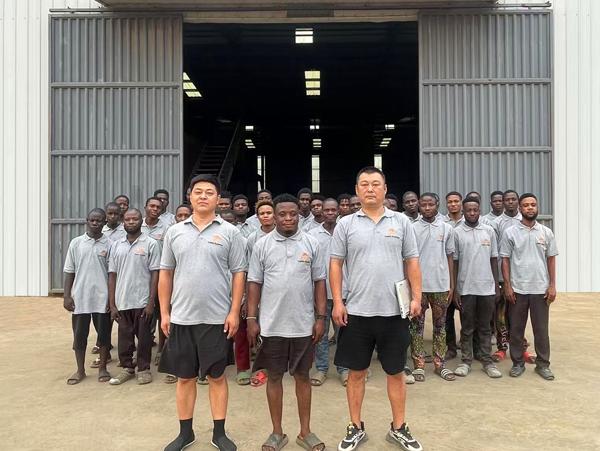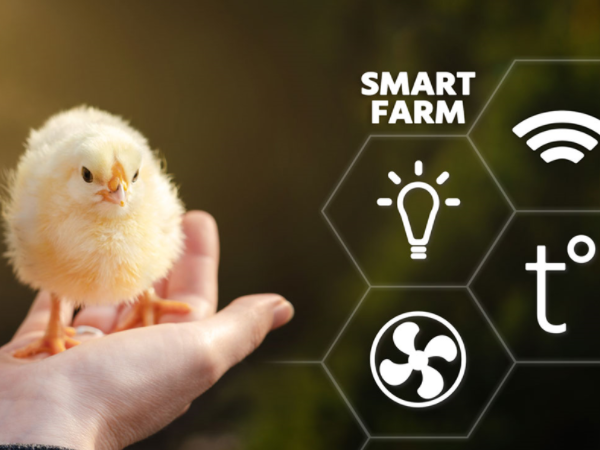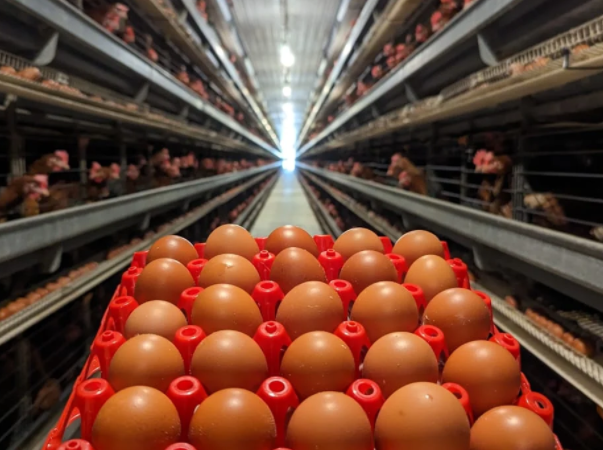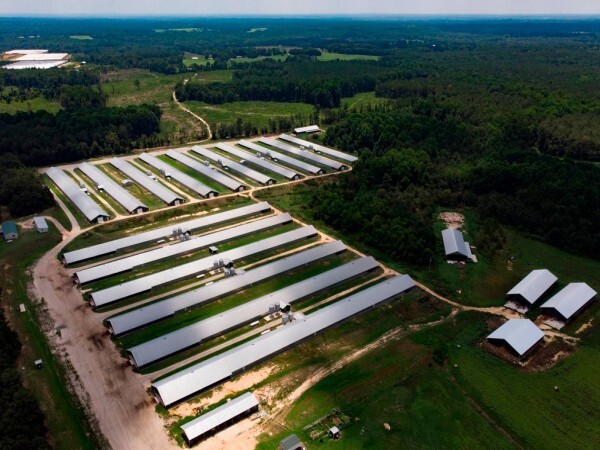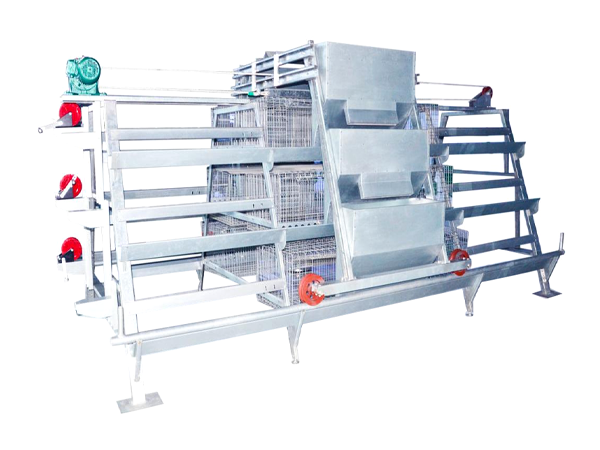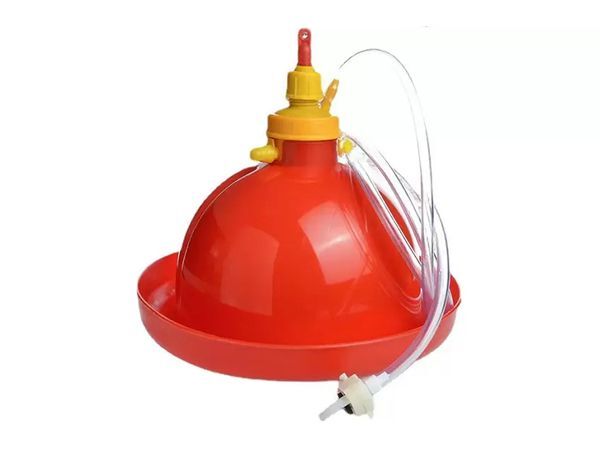
Chicken layer cage
A chicken layer cage is a type of enclosure used to house laying hens in a poultry farm. It is designed to provide a safe and healthy environment for the hens, while also maximizing egg production. The cage is typically made of metal or plastic and has multiple tiers, with each tier having a series of nesting boxes, perches, and feeding and watering systems
The cages are usually arranged in rows in a poultry house, with each row having multiple cages the size of the cage can vary depending on the specific needs and requirements of the farm, but typically ranges from 2-4 square feet per bird. Chicken layer cages are designed to meet the specific needs of laying hens, providing adequate space, ventilation, and nutrition. The cages are equipped with features such as automated feeding and watering systems, egg collection systems, and manure removal systems
The cages are also designed to reduce stress and promote healthy behavior in the hens, with features such as perches and nesting boxes. Overall, chicken layer cages are an important component of modern poultry farming, allowing farmers to efficiently and humanely produce high quality eggs. By providing a controlled environment, chicken layer cages help to improve egg production, reduce labor costs, and promote animal welfare

Dimension for 1000 chicken layer cage
The dimensions of a 1000 chicken layer cage can vary depending on the specific design and manufacturer. However, here is a general idea of the dimensions of a typical 1000 chicken layer cage
1. Length: 20-25 feet (6-7.6 meters)
2. Width: 10-12 feet (3-3.6 meters)
3. Height: 6-8 feet (1.8-2.4 meters)
4. Tier height: 2-3 feet (0.6-0.9 meters)
5. Bird space per tier: 2-4 square feet (0.2-0.4 square meters)
6. Total bird space: 2000-4000 square feet (185-372 square meters)
7. Cage depth: 2-3 feet (0.6-0.9 meters)
8. Feeder trough length: 20-25 feet (6-7.6 meters)
9. Feeder trough width: 1-2 feet (0.3-0.6 meters)
10. Waterer trough length: 20-25 feet (6-7.6 meters)
11. Waterer trough width: 1-2 feet (0.3-0.6 meters)
Keep in mind that these dimensions can vary depending on the specific needs and requirements of your chicken layer operation. It I s also important to consider factors such as ventilation, lighting, and manure management when designing or selecting a chicken layer cage system
We are always happy to support our customers and partners with technical questions, products you may want to learn more, click the name to visit
1. Automatic battery cage for pullet, brooder, layer, chicken parents and broiler
2. Chicken feed mill, manure drying machine and egg collection
3. Deep litter plasson drinker, feeder and broiler slaughtering equipment
4. Other poultry farm equipment...
Bookmark our website and contact us now to making enquiry, visiting to our office and factory and checking the sample...
Advantages
1. Increased egg production: Chicken layer cages can increase egg production by providing a comfortable and stress free environment for hens
2. Improved egg quality: Chicken layer cages can improve egg quality by reducing the risk of egg breakage and contamination
3. Reduced labor costs: Chicken layer cages can reduce labor costs by automating tasks such as feeding, watering, and egg collection
4. Improved chicken health: Chicken layer cages can improve chicken health by providing a clean and sanitary environment and reducing the risk of disease
5. Increased efficiency: Chicken layer cages can increase efficiency by allowing for more chickens to be housed in a smaller area
6. Better feed conversion: Chicken layer cages can improve feed conversion by reducing waste and improving feeding efficiency
7. Reduced mortality rates: Chicken layer cages can reduce mortality rates by providing a safe and healthy environment for chickens
8. Improved biosecurity: Chicken layer cages can improve biosecurity by reducing the risk of disease and contamination
9. Increased flexibility: Chicken layer cages can increase flexibility by allowing for easy expansion or modification of the flock
10. Cost effective: Chicken layer cages can be a cost effective option for farmers, especially when compared to other types of chicken housing systems
Maintenances
1. Cleaning: Regularly clean the cages to remove waste and debris
2. Disinfecting: Disinfect the cages and equipment to prevent disease
3. Feeder maintenance: Check and maintain feeders to ensure they are working properly
4. Waterer maintenance: Check and maintain waterers to ensure they are working properly
5. Egg collector maintenance: Check and maintain egg collectors to ensure they are working properly
6. Manure removal: Regularly remove manure from the cages to maintain a clean and healthy environment
7. Cage inspection: Regularly inspect the cages for damage or wear and tear
8. Repair and replacement: Repair or replace damaged or worn-out parts to maintain the integrity of the cages
9. Pest control: Implement pest control measures to prevent infestations
10. Record keeping: Keep accurate records of maintenance tasks, feed consumption, egg production, and other important data
Preventions
1. Biosecurity measures: Implement strict biosecurity measures to prevent the introduction and spread of diseases
2. Vaccination programs: Implement vaccination programs to protect against specific diseases
3. Sanitation and hygiene: Practice regular sanitation and hygiene procedures to prevent the spread of disease
4. Pest control: Implement pest control measures to prevent infestations
5. Regular health checks: Conduct regular health checks on the flock to detect any health issues early
6. Proper ventilation: Ensure proper ventilation in the cages to prevent ammonia buildup and respiratory problems
7. Comfortable temperatures: Ensure comfortable temperatures in the cages to prevent heat stress and other temperature-related issues
8. Humidity control: Implement humidity control measures to prevent moisture buildup and related health issues
9. Feeder and waterer maintenance: Regularly clean and maintain feeders and waterers to prevent contamination
10. Regular cage cleaning: Regularly clean out the cages to prevent the buildup of waste and debris
Our services
1. Our team of poultry farming experts provides professional consultation services to guide farmers in choosing the right chicken cage system based on their farm's needs and capacity
2. We offer customized cage solutions tailored to individual farm requirements, ensuring optimal space utilization and animal welfare
3. Our experienced team provides on-site installation support, ensuring proper setup and functionality of the chicken cage system
4. We offer comprehensive training and education programs for farmers and farm workers on cage management and poultry care to ensure successful cage operations.
5. Our services extend beyond installation, as we provide ongoing maintenance and support to ensure the continued efficiency of the cage system.
6. Our team conducts thorough farm evaluations to assess the suitability of the chicken cage system for a specific poultry farm
Frequently ask questions
Q: What is the importance of biosecurity in chicken layer cages?
A: Biosecurity is crucial in chicken layer cages to prevent the introduction and spread of diseases, which can have a significant impact on the health and productivity of the flock
Q: How often should chicken layer cages be cleaned and disinfected?
A: Chicken layer cages should be cleaned and disinfected regularly, ideally once a week, to remove waste and debris and prevent the buildup of harmful bacteria and germs
Q: What is the role of ventilation in chicken layer cages?
A: Proper ventilation in chicken layer cages is essential to remove harmful gases, such as ammonia, and provide a comfortable and healthy environment for the chickens. It also helps to reduce moisture buildup and prevent respiratory problems
Message
Products recommended
 Nigeria-China factory supplying poultry farm equipment and poultry battery cage1. Address: After Sinoma Office, 200 Meters Near Danco Filling Station, Lagos/Ibadan Expressway, Lagos State, Nigeria.
Nigeria-China factory supplying poultry farm equipment and poultry battery cage1. Address: After Sinoma Office, 200 Meters Near Danco Filling Station, Lagos/Ibadan Expressway, Lagos State, Nigeria.
2. Based on European’s design and quality standards together with our China branch.
3. Lagos ‘s office and factory selling and manufacturing poultry battery cage, poultry farm equipment.
4.The products’ quality is customized for Nigerian poultry farms.
5. 24 online reception Whatsapp NO. : +2348111199996, +8618830120193,contact us to get price list.Read moreGetting price
 50,000-100,000 chickens/house: poultry farm solution, chicken cage, poultry farm equipment, AI smart managementThis plan includes:
50,000-100,000 chickens/house: poultry farm solution, chicken cage, poultry farm equipment, AI smart managementThis plan includes:
1. Selection plan of chicken cages and poultry farm equipment for 50,000+ chickens.
2. Chicken cages and poultry farm equipment required of 50,000+ chickens.
3. Equipment required for open and closed chicken houses of 50,000+ chickens.Read moreGetting price
 30,000 - 50,000 chickens/house: poultry farm solution, chicken cage, poultry farm equipment, AI smart managementThis plan includes:
30,000 - 50,000 chickens/house: poultry farm solution, chicken cage, poultry farm equipment, AI smart managementThis plan includes:
1. Selection plan of chicken cages and poultry farm equipment for 30,000 to 50,000 chickens.
2. Chicken cages and poultry farm equipment required of 30,000 to 50,000 chickens.
3. Equipment required for open and closed chicken houses of 30,000 to 50,000 chickens.Read moreGetting price
 10,000 - 30,000 chickens/house: poultry farm solution, chicken cage, poultry farm equipment, AI smart managementThis plan includes:
10,000 - 30,000 chickens/house: poultry farm solution, chicken cage, poultry farm equipment, AI smart managementThis plan includes:
1. Selection plan of chicken cages and poultry farm equipment for 10,000 to 30,000 chickens.
2. Chicken cages and poultry farm equipment required of 10,000 to 30,000 chickens.
3. Equipment required for open and closed chicken houses of 10,000 to 30,000 chickens.Read moreGetting price
 100 - 10,000 chickens/house: poultry farm solution, chicken cage, poultry farm equipment, AI smart managementThis plan includes:
100 - 10,000 chickens/house: poultry farm solution, chicken cage, poultry farm equipment, AI smart managementThis plan includes:
1. Selection plan of chicken cages and poultry farm equipment for 100 to 10,000 chickens.
2. Chicken cages and poultry farm equipment required of 100 to 10,000 chickens.
3. Equipment required for open and closed chicken houses of 100 to 10,000 chickens.Read moreGetting price
 Type 1 breeder battery cage (500 to 30,000 birds)The rearing quantity can be increased about 1.5 to 3 times comparing with floor deep litter raising system and be about 1.5 to 4 times less than type 2 in same houseRead moreGetting price
Type 1 breeder battery cage (500 to 30,000 birds)The rearing quantity can be increased about 1.5 to 3 times comparing with floor deep litter raising system and be about 1.5 to 4 times less than type 2 in same houseRead moreGetting price
 Type 2 breeder battery cage (10,000 to 50,000+ birds)The rearing quantity can be increased about 3 to 8 times times comparing with floor deep litter raising system and about 1.5 to 4 times comparing with type 1 in same house and day old egg laying chicken are moved to layer battery cage after growing up to 84 daysRead moreGetting price
Type 2 breeder battery cage (10,000 to 50,000+ birds)The rearing quantity can be increased about 3 to 8 times times comparing with floor deep litter raising system and about 1.5 to 4 times comparing with type 1 in same house and day old egg laying chicken are moved to layer battery cage after growing up to 84 daysRead moreGetting price
 Type 1 layer battery cage (500 to 30,000 birds)Chicken drop manure to the manure belt under the last tier of layer cage bottom mesh
Type 1 layer battery cage (500 to 30,000 birds)Chicken drop manure to the manure belt under the last tier of layer cage bottom mesh
The belt transfer manure to terminal lateral conveyor belt with scraper in the end of every row of layer cages inside of chicken houseRead moreGetting price
 Type 2 layer battery cage (10,000 to 50,000+ birds)It is combined with egg collection belts Italian technology and terminal egg conveyor lifting system and egg conveyor system
Type 2 layer battery cage (10,000 to 50,000+ birds)It is combined with egg collection belts Italian technology and terminal egg conveyor lifting system and egg conveyor system
Chicken drop eggs to bottom layer cage mesh and egg rolls to egg beltRead moreGetting price
 Type 3 layer battery cage (50,000 to 100,000+ birds)The layer cage mesh is made of zinc aluminum alloy or hot galvanized wire
Type 3 layer battery cage (50,000 to 100,000+ birds)The layer cage mesh is made of zinc aluminum alloy or hot galvanized wire
Which has a smooth surface to protect the chicken feet without hurtRead moreGetting price
 Type 1 broiler battery cage (500 to 30,000 birds)It is fully automatic with automatic drinking and feeding and manure removal system
Type 1 broiler battery cage (500 to 30,000 birds)It is fully automatic with automatic drinking and feeding and manure removal system
Broiler cage system is with automatic drinking systemRead moreGetting price
 Type 2 broiler battery cage (30,000+ birds)The feeding system can meet the needs of different ages
Type 2 broiler battery cage (30,000+ birds)The feeding system can meet the needs of different ages
When the chicken cages transferred into the chicken cage and the feed pan will be opened on the floor in 360 degree overflow device that the chickens can eat easilyRead moreGetting price
 Bell plasson drinkerOur service are from design schemes of turnkey poultry farm project and product introduction and offer quotation and delivery and installation instruction and equipment maintenance to farm instruction and so onRead moreGetting price
Bell plasson drinkerOur service are from design schemes of turnkey poultry farm project and product introduction and offer quotation and delivery and installation instruction and equipment maintenance to farm instruction and so onRead moreGetting price
 Feeding trolleyFeed are evenly to add chicken cage feeding trough from the feed pipe by sucking feed from hopper with motorRead moreGetting price
Feeding trolleyFeed are evenly to add chicken cage feeding trough from the feed pipe by sucking feed from hopper with motorRead moreGetting price
 Common feed millFeed mill is professional in producing fodder for chicken and ducks and rabbits and pigs and cows and so on
Common feed millFeed mill is professional in producing fodder for chicken and ducks and rabbits and pigs and cows and so on
The material is grain and corn and soybean and so onRead moreGetting price
 Ground feeder and drinkerIt is to rearing 1 day to 84 days old close adult egg laying chicken and day old egg laying chicken are moved to layer battery cage after growing up to 84 daysRead moreGetting price
Ground feeder and drinkerIt is to rearing 1 day to 84 days old close adult egg laying chicken and day old egg laying chicken are moved to layer battery cage after growing up to 84 daysRead moreGetting price
 Feed pellet machineFeed pellet machine are also named feed pelletizer and chicken feed machine and animal feed pellet machine and animal feed hammer mill and animal feed puffed pellet machine and chicken feed making machineRead moreGetting price
Feed pellet machineFeed pellet machine are also named feed pelletizer and chicken feed machine and animal feed pellet machine and animal feed hammer mill and animal feed puffed pellet machine and chicken feed making machineRead moreGetting price
 Egg incubator machineOur service are from design schemes of turnkey poultry farm project and product introduction and offer quotation and delivery and installation instruction and equipment maintenance to farm instruction and so onRead moreGetting price
Egg incubator machineOur service are from design schemes of turnkey poultry farm project and product introduction and offer quotation and delivery and installation instruction and equipment maintenance to farm instruction and so onRead moreGetting price
 Scraper manure removal systemThe manure scraper will go from the beginning of the hollow to the end
Scraper manure removal systemThe manure scraper will go from the beginning of the hollow to the end
One set is working for 2 rows or 3 rows of chicken cageRead moreGetting price
 Manure drying machineOur service are from design schemes of turnkey poultry farm project and product introduction and offer quotation and delivery and installation instruction and equipment maintenance and to farm instruction and so onRead moreGetting price
Manure drying machineOur service are from design schemes of turnkey poultry farm project and product introduction and offer quotation and delivery and installation instruction and equipment maintenance and to farm instruction and so onRead moreGetting price
Contact
By clicking 'Allow All', you agree to the storage of cookies on your device to enhance site navigation, analyze site usage and assist with our marketing efforts.
